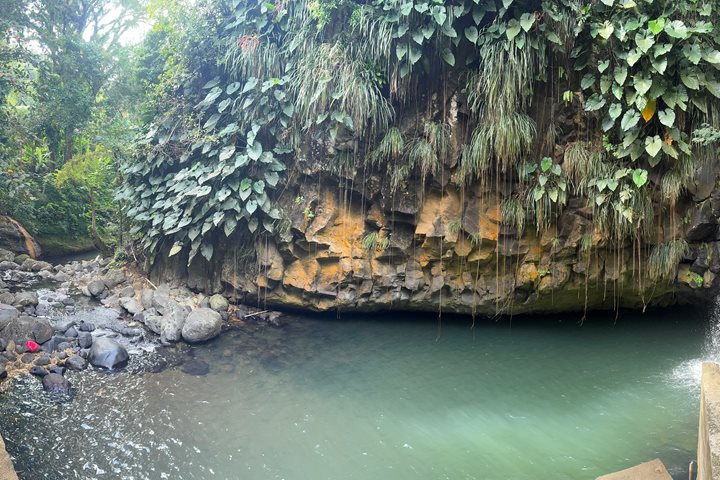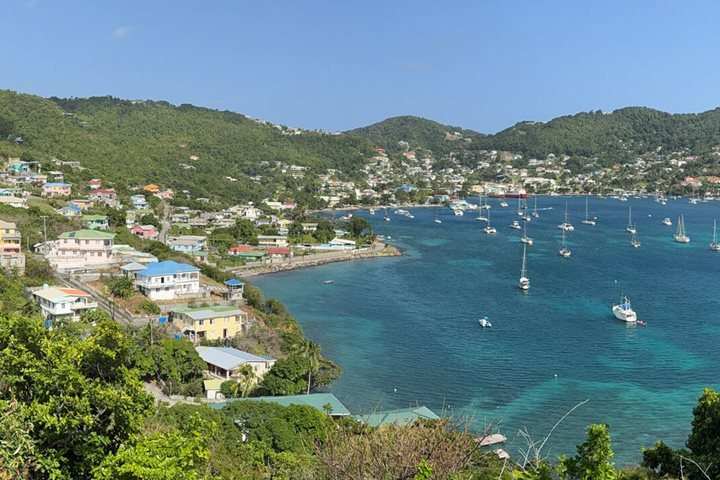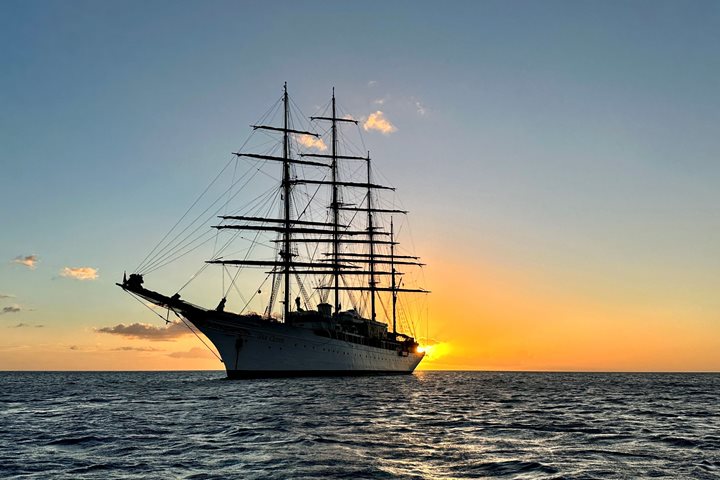The Arawak people, who arrived in Barbados from South America ca. 800 CE, originally named the island Ichirougaiam, meaning “island with the white teeth.” The moniker may refer to the coral reefs surrounding the island and the difficulty of getting a canoe through them. The present name, Barbados, comes from the Portuguese word “barbados” for “bearded ones,” and likely stems from the name the navigators gave to the fig tree (Ficus citrifolia), which drops roots from branches to the ground. The Portuguese sailed here in 1536, but the island is essentially English on account of inhabitants who arrived here in 1625 and stayed.
We motored out of our docking in Bridgetown, Barbados, and began our journey west toward St. Lucia and St. Vincents. We were making 5 to 7 knots overnight, rolling with a soft, slow pitch, like the gentle rocking of a hammock. The brilliant yellow Caribbean sun rose at 6:25 a.m. At 8:45 a.m., there was a presentation on the identification of the sails from the spanker deck as the crew went aloft to set sails for our first sea day. We had staff introductions followed by a presentation on photography, and then we enjoyed our first scrumptious lunch served al fresco on the Lido Deck.
In the afternoon, we heard a talk on the history of slavery and the great wealth generated by cane sugar farming. Approximately 12 million Africans, chiefly from West Africa and Congo, were sold into slavery in the West Indies and the continental U.S. beginning in the 1540s. At a most respectful 6.6 knots, we sailed by the Gros and Petit Piton (Large and Small Peaks) UNESCO World Heritage site—spectacular against the azure sky and deep blue sea.









